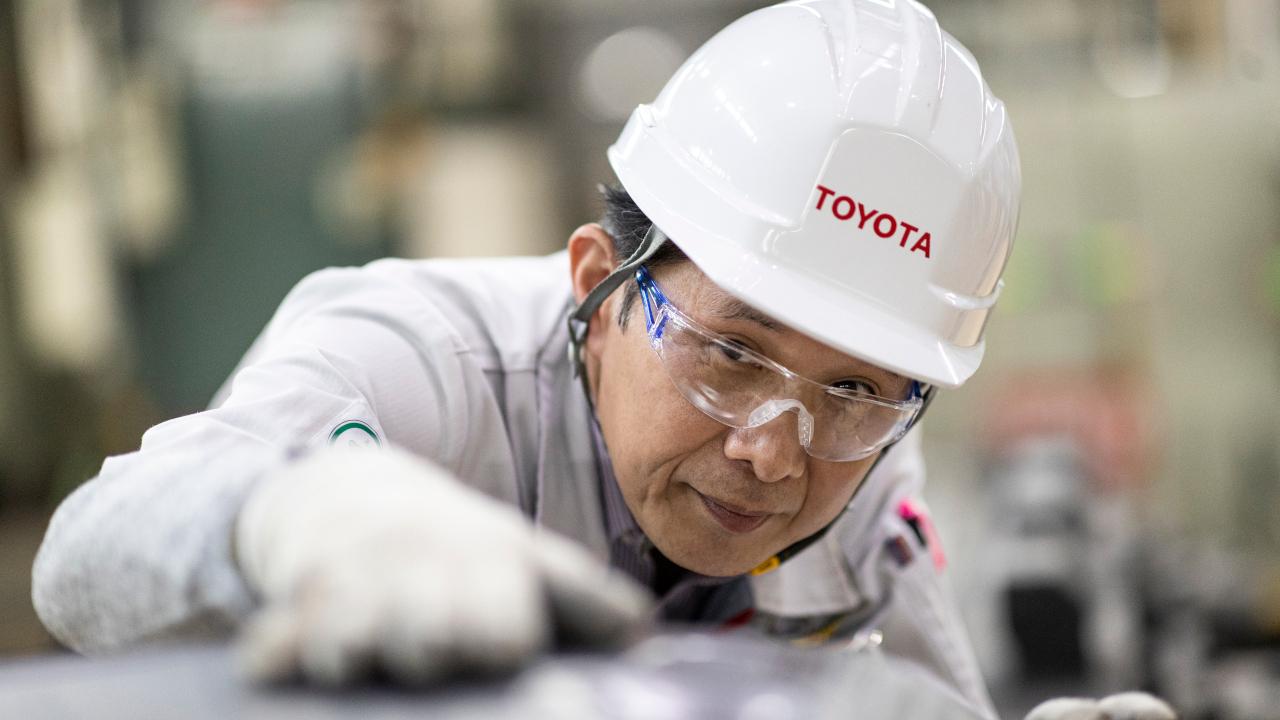
Toyota Times uncovers the essence and core strength of the traditional Japanese monozukuri (making things), which is woven from the past into the future. The fifth interviewee is a master of press molding.

While many people pay attention to advanced technologies such as 3D printers and AI when it comes to making something new, there is a lot of handmade work remaining in the front lines of car manufacturing.
In this series, by interviewing some of the masters supporting Toyota’s manufacturing with their craftsmanship, Toyota Times uncovers the essence and core strength of the traditional Japanese monozukuri (making things).
The fifth interviewee is Yasunobu Wada, a master of press molding.
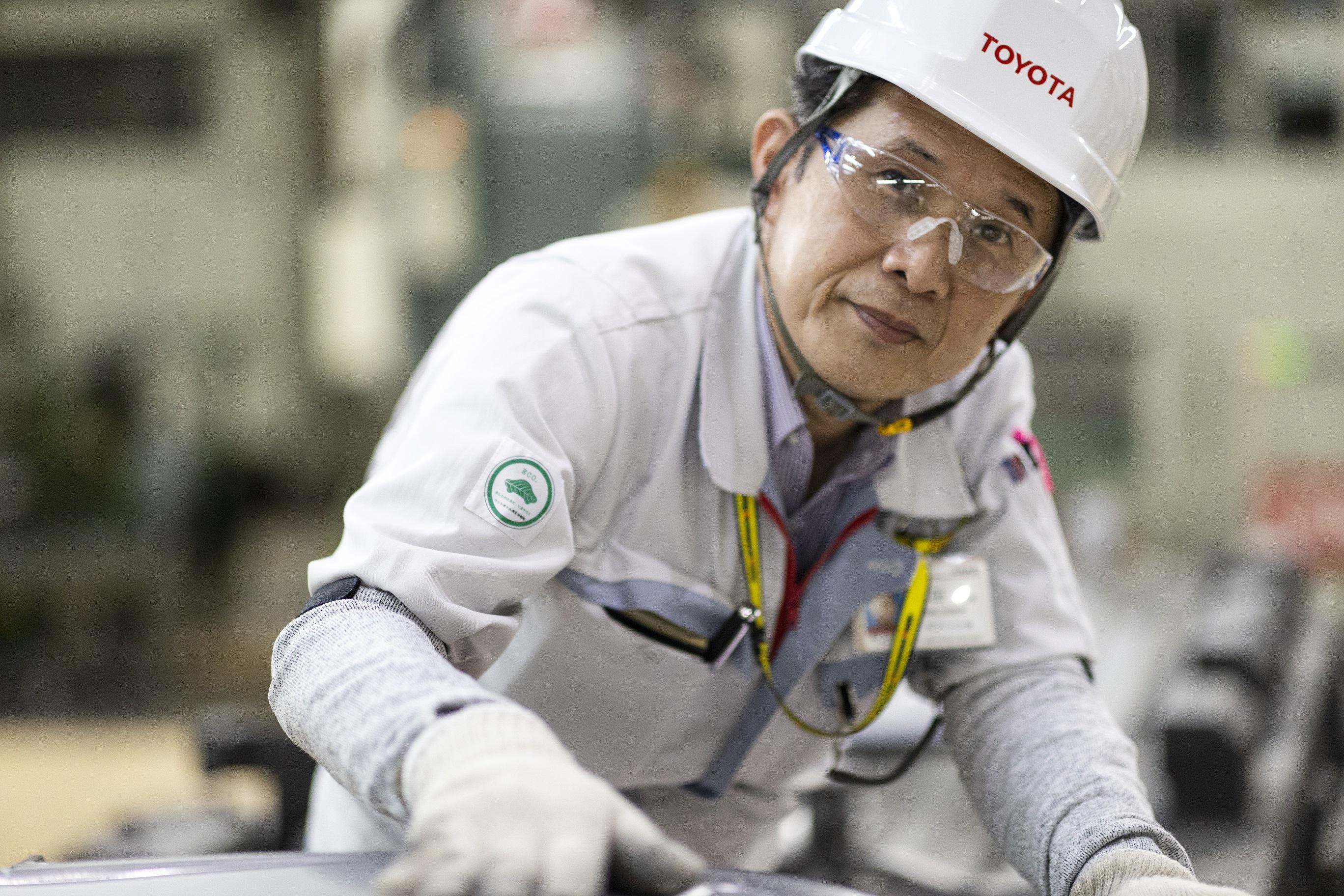
Series #5 Yasunobu Wada, a master of press molding production, who makes molds for press machines that make car bodies
Chief Expert, Die Guarantee Section, Mobility Tooling Division at Toyota Motor Corporation
Press molding, an essential process in making car bodies
The body is the largest part of the car and serves many vital roles. Not only does it determine the look of a car, it also protects the drivers from wind, rain, heat, cold and noise coming from outside while driving. It also safeguards the lives of drivers in case of an accident or collision.
First and foremost, the body is the foundation of a car. The car will not function without the body that houses the engine, suspension and all the other parts that support such basic car performance features as running, turning, stopping and much more. That's why the car body must be strong, light and roomy inside, and beautiful outside.
The car body is composed of large parts, including floor panels, side sills, roof panel, front, center, rear pillars, cross members, fenders, the hood, trunk lid and door panels. Moreover, most of these body parts are made of steel or iron plates.
How do steel plates transform into car body parts? The method was introduced in Part 4 of this series in which the sheet-metal craftspeople make prototype car bodies by hand using a hammer. However, in the case of the production cars, it is impossible to make car bodies one by one by hand. That is where the pressing method comes in, which employs large press machines equipped with top and bottom press molds.
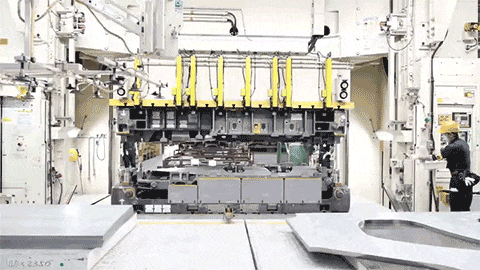
A pressure of 1,600 tons is applied to the steel plate that is more or less cut into the shape of the body part by sandwiching it in a press machine equipped with top and bottom molds. By doing this, the steel plate is compressed and morphed into the shape of the molds. The steel plate is eventually transformed into a car body part after repeating this process several times.
Toyota's first passenger car, the Toyoda Model AA (1936-1943), was also the first passenger car with an all-steel body. Toyota began using the press working process to produce car bodies starting with this car. That said, most car bodies of the Model AA were molded by hand, and only a small number of car body parts were made using the 500-ton press machines available at that time.
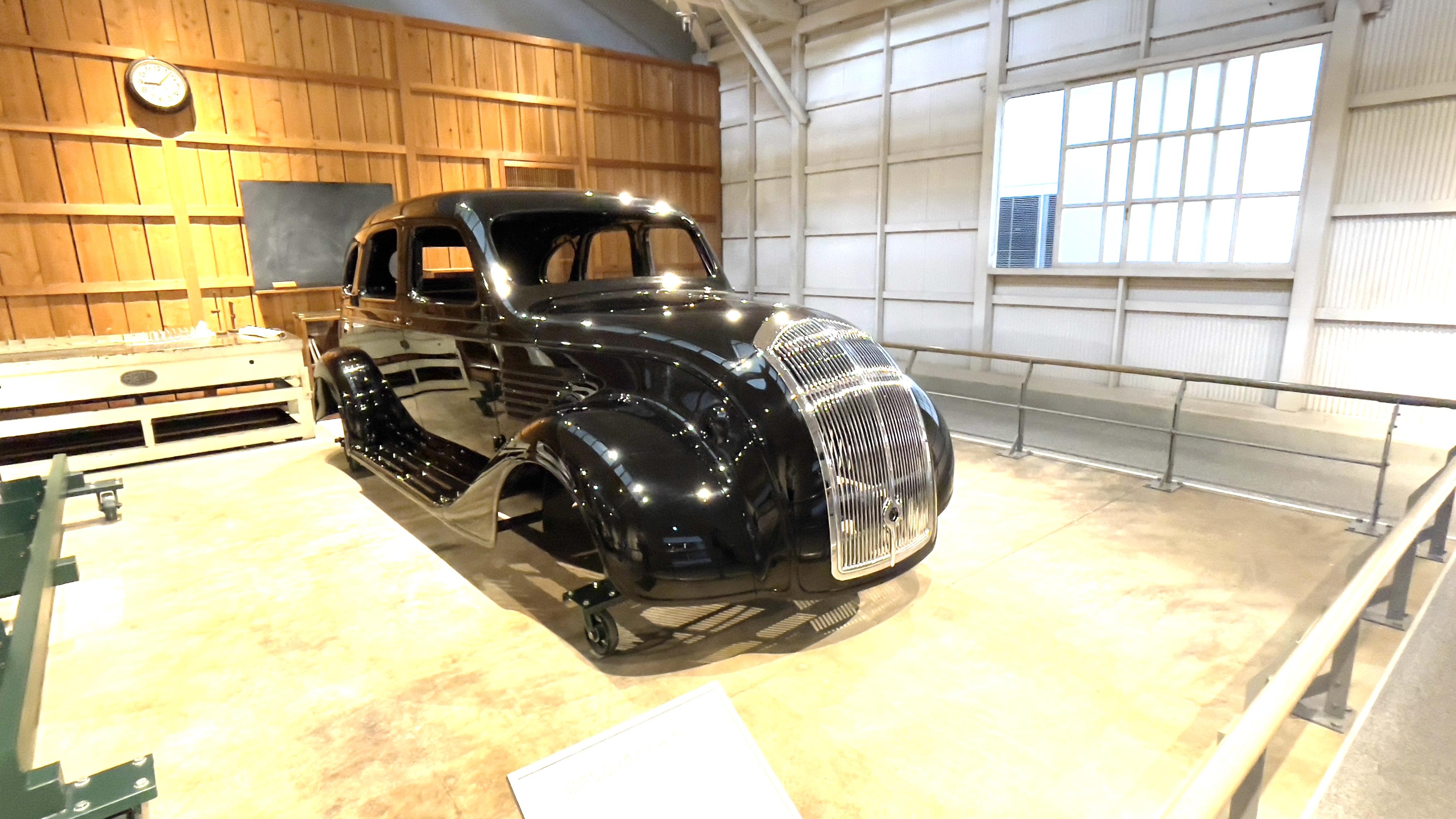
Press working was fully adopted in Toyota's car body production, starting from the production of the first-generation Toyota Crown released in January 1955. State-of-the-art 600-ton press machines manufactured by Dunley in the U.S. were first introduced in the press process of the Toyota Motomachi Plant, which started its operation as a new plant in 1959. Since then, Toyota's press working technology has made great strides.
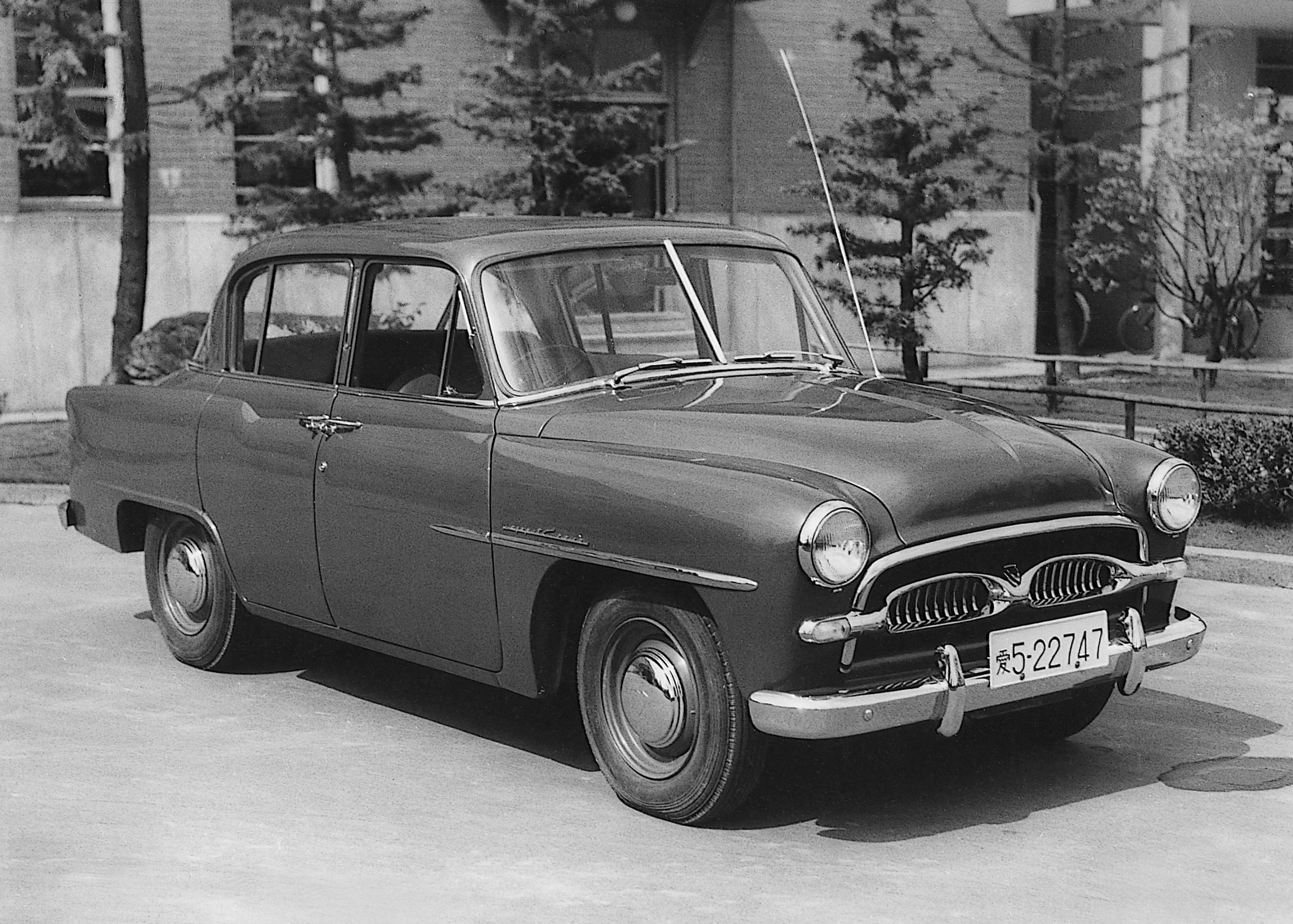
Yasunobu Wada, the subject of the series this time, is a master of making press molds used in press machines that make large car body parts. He is one of the top press mold craftspeople and one of the two people who are qualified for the Class S skill certification for specialized skills in Toyota’s department.

“A car is made up of about 30,000 parts, of which about 1,000 are made of steel plates. About 90% of these are manufactured by pressing using a mold. I make the press mold for the body skin, which is the largest part in the process. In terms of department, it’s called process maintenance. I've been doing this job since I joined the company in 1982.”
Work that reflects the design of the car
Wada was born in Shizuoka Prefecture and joined Toyota after graduating from the mechanical department of Hamamatsu Kohoku High School. One reason why he chose Toyota was because his uncle worked for Toyota, he says.
“When I joined the company in 1982, I wanted to be assigned to the production line. At that time the majority of press mold making was done by hand by professional press mold craftspeople. About 300 people were doing this manual work and their hands were covered with the black powder from shaved molds.”
At that time, the factory building was old and there was only large equipment and molds. He could not believe that he had to work in such a dirty and scary place, where large molds on cranes were flying through the air. Nevertheless, he quickly got used to it, and worked on improving his skills by observing his seniors and trying to do better than them.
As mentioned earlier, Wada's main work is the production of press molds for outer panels used on production lines. Designers work on the design of the car, but it is impossible to realize these designs without the skills of press mold craftspeople like Wada, especially when it comes to the appearance.
Whether or not the beautiful and stylish design drawn by the designer can be made into a real car depends on whether or not the outer panel of the body can be molded according to that design. That’s where the press mold that Wada makes for the outer panel comes in.
“Among the body's outer panels that make up the entire side part of the car body, the side member outer is the largest part and vital to the car design. The size of the mold for this part is about 4.5 meters long and 2.3 meters wide, and when the upper and lower molds are combined, it weighs about 30 tons. If there is the slightest problem when a large steel plate is sandwiched between the upper and lower molds and a force of 1,600 tons is applied for press working, parts of the panel will crack or be deformed and it won’t have a beautiful finish.”
Making manual micro-adjustments to a huge press mold
The huge molds used in the press process for the outer panel, including this side member outer, are made of casting. This mold is first designed on a computer using CAD software. Then, an outside casting manufacturer creates a huge casting mold based on this design data. The delivered mold is then cut with a huge NC (Numerical Control) machine in-house, and processed precisely according to the design data. However, the mold is still not completed at this point.
This is where Wada’s team, the press mold craftspeople for process maintenance, play a vital role with their skills. They set this huge mold on the press machine, check if there are any problems or defects, and manually adjust the mold by actually hammering the steel plate using the mold over and over again.
“Many problems arise when we actually have the press machine hammer the steel plate using the mold. Some parts of the large panel can become wrinkled or deformed, while other parts of the steel plate can crack. We check for these, and make adjustments by shaving the surface of the mold to eliminate these problems.”
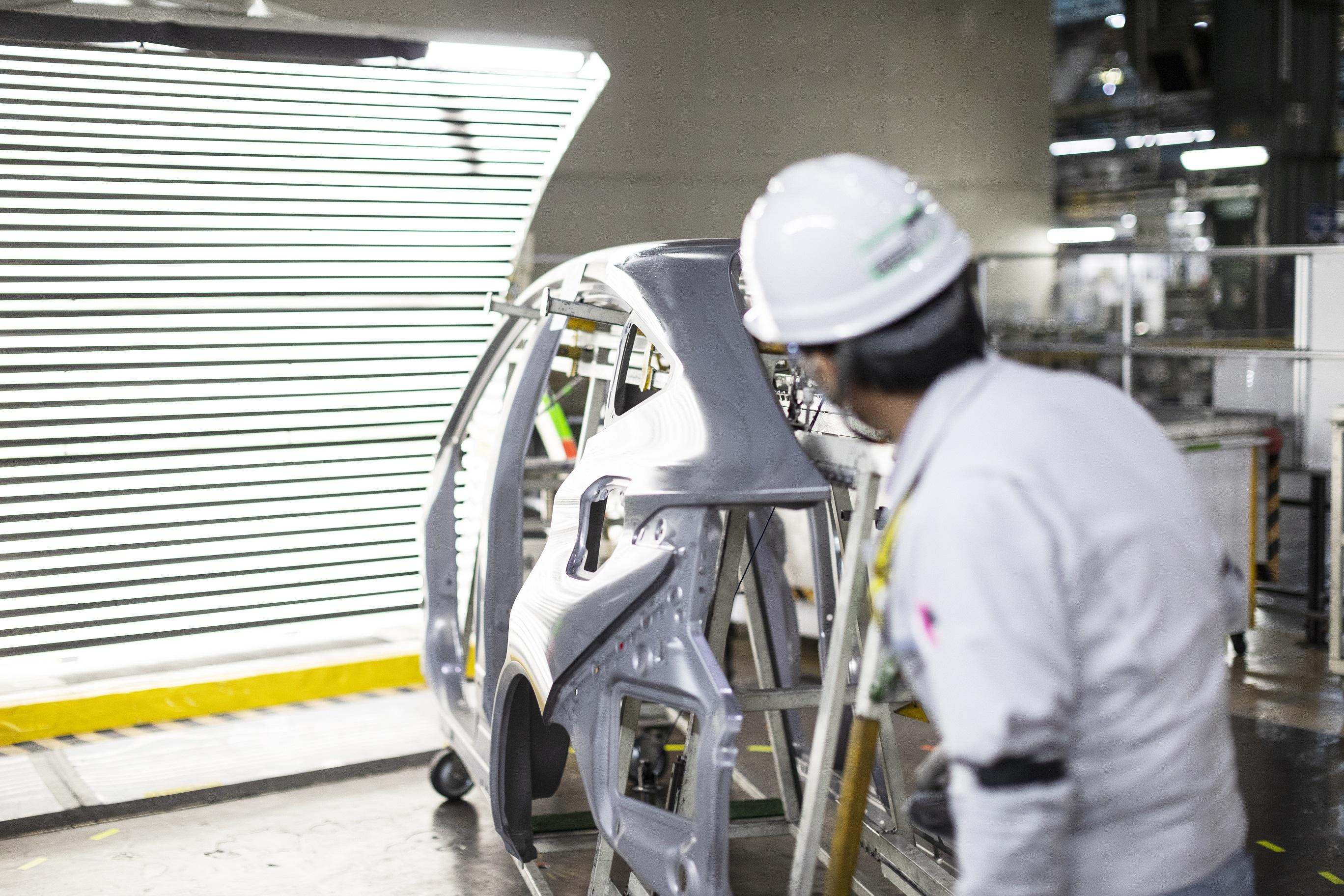

This adjustment work is the very definition of mastery. First, he leaned the hammered outer panel against a dedicated stand. Then he used a dedicated flat lamp that emits a controlled directional light and closely examined its pathway and reflection on the panel surface by eye and touch, looking for any slight distortion on the surface of the panel while also identifying the location and shapes of these distorted areas.
Even amateurs can easily recognize cracks and wrinkles on the panel. On the other hand, these small distortions on the outer panel are hard to spot. Wada can immediately recognize the slightest distortion on the surface of the outer panel at the 1/1000 mm level.
“Problems often occur when the panel is curved instead of being straight with the curves becoming smaller and smaller, or the parts with intersecting straight lines where the angle between them gets more acute. These steel plates used in these parts are prone to cracks or distortion, and are very difficult to fix.”
Wada makes adjustments to a huge mold with a total length of several meters and weighing tens of tons by checking both the outer panel and the mold. This method of checking mold is done in an extremely hands on fashion.
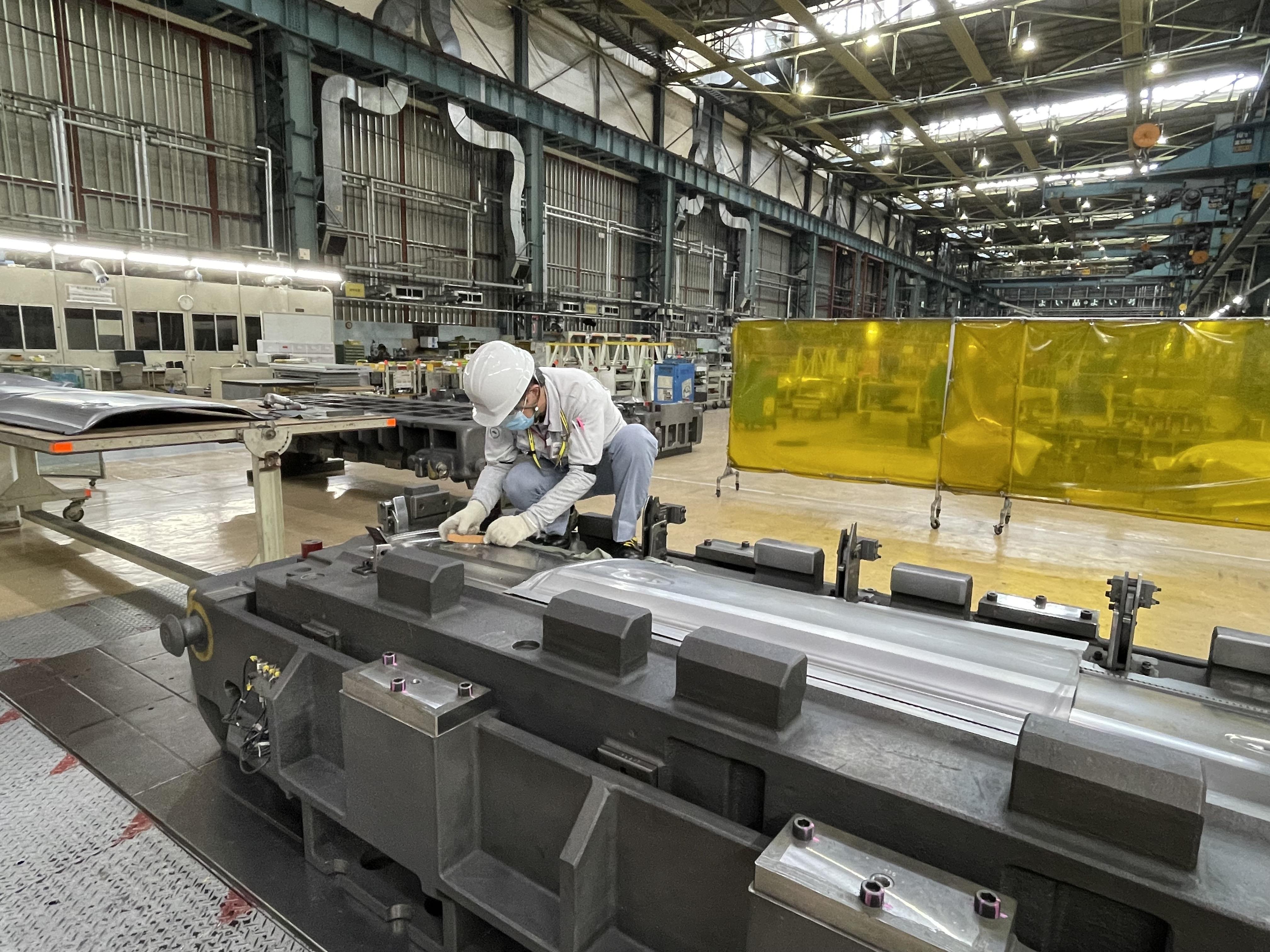
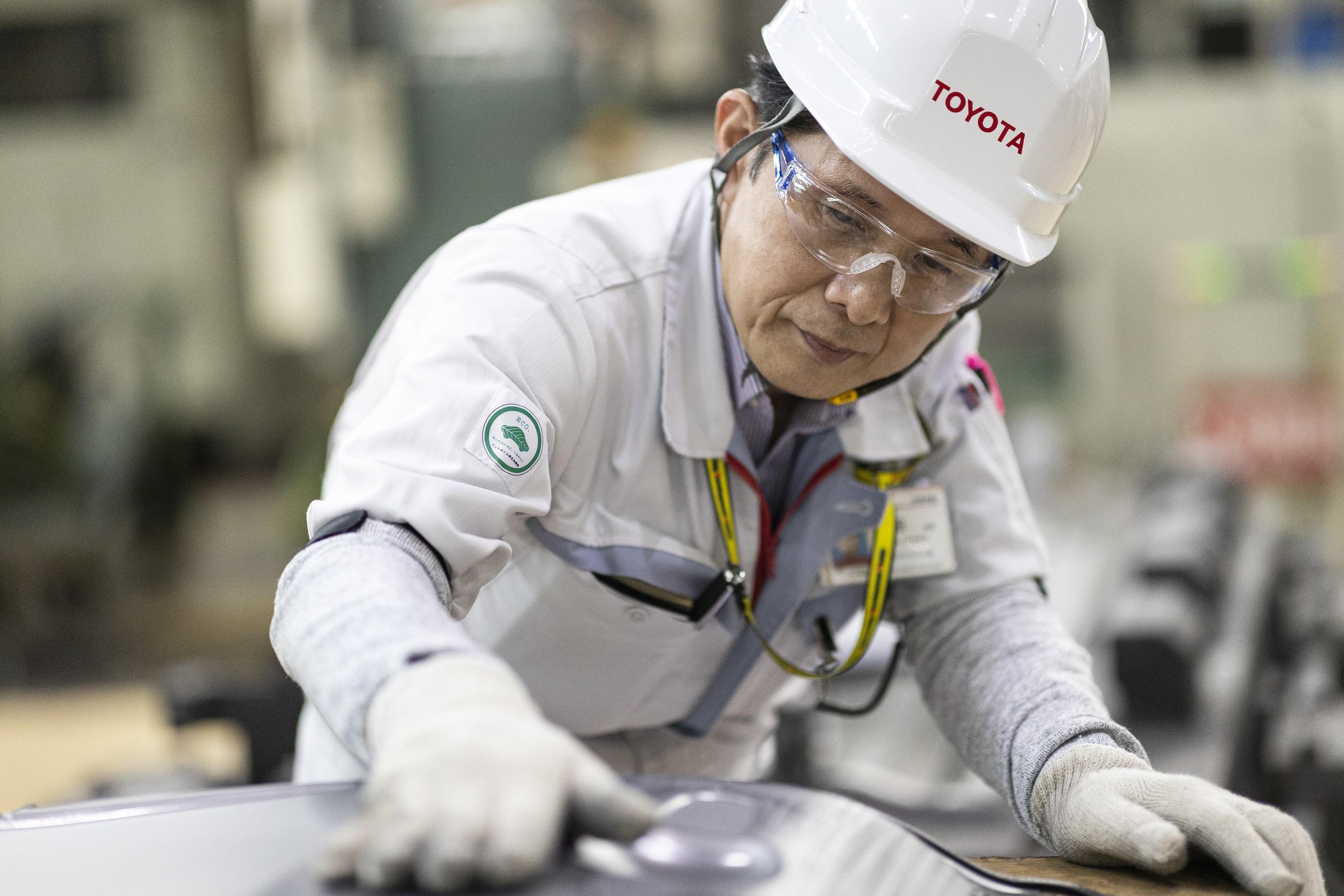
They occasionally use measuring tools, but the final adjustment is made visually with a straight ruler or a fine whetstone that is cut to form a straight line. They can tell the condition of the mold by stroking its surface with a whetstone by hand. Then they determine where and how to adjust the mold based on their past experiences.
“When we apply this whetstone to the mold 10 times, we can shave the surface by about 3/1000 mm. We use cutting tools when we need to make large adjustments, and sandpaper or these whetstones for fine adjustments.”
When making adjustments, Wada imagines how the mold and steel plates moved together during the pressing stage, and refers to this work as an indispensable skill as a press mold craftsperson. However, this requires not only intuition, but also at least 10 years of experience. Wada told us that it is said that craftspeople only “begin to blossom in 10 years.”
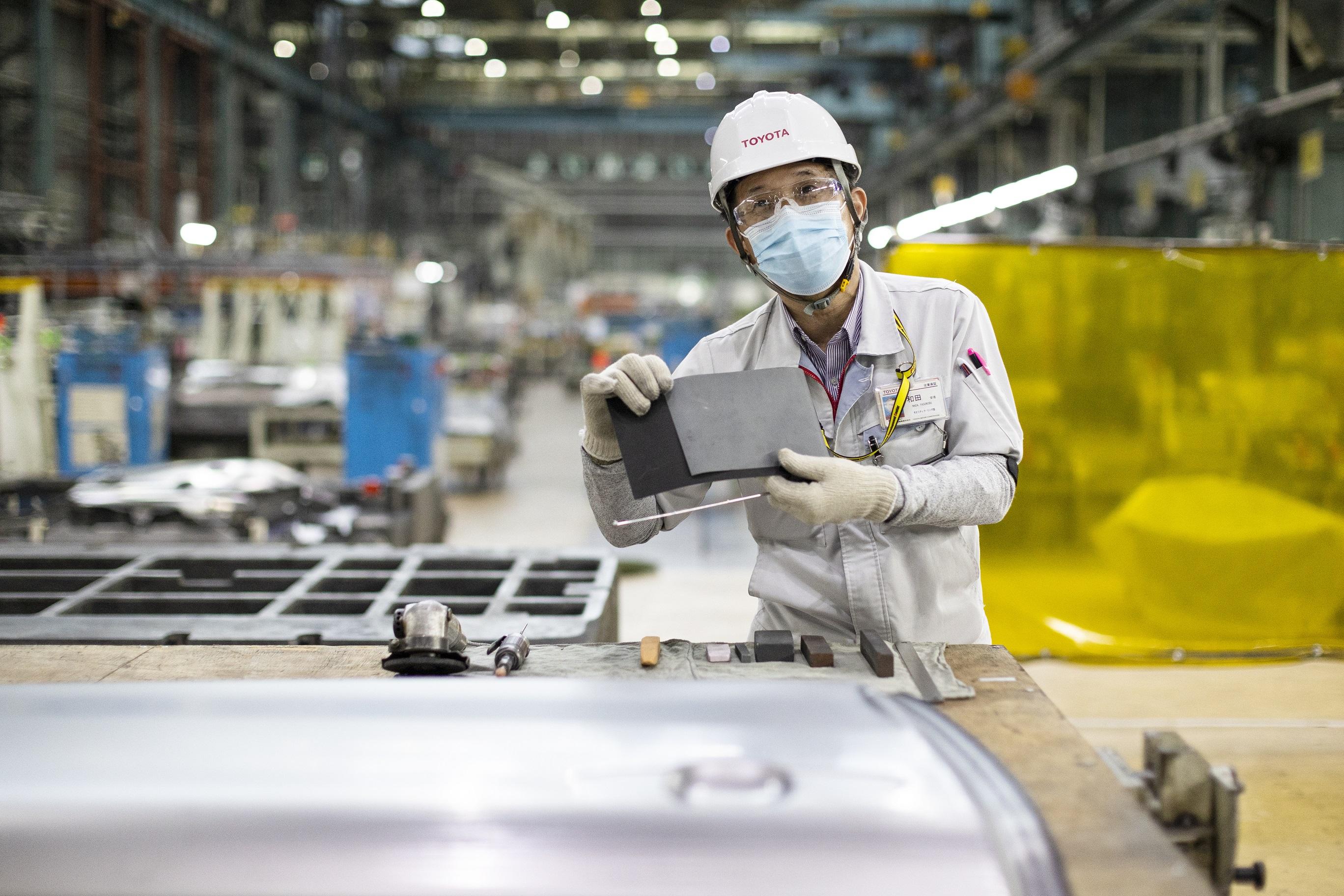
“There is actually more than one way to adjust the mold as desired. Every craftsperson has their own way to shave or change the shape of the mold. We decide the best adjustment method based on all of our experiences and skills.”
They immediately catch even the slightest distortions on a large outer panel that the average person would never have noticed just by shining a light on it. They can create large scale molds with complex shapes that weigh dozens of tons exactly the way they want with precision at a microlevel using just their eyes and fingertips and past experiences. The level of perceptiveness, subtlety and outstanding skills is just astonishing.

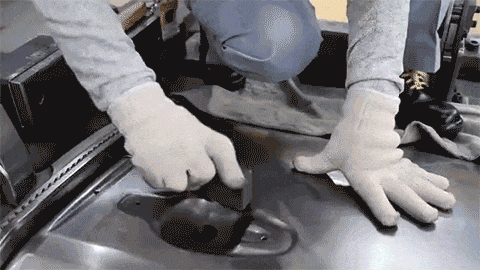
Press molds that remain functional for as much as 4 years
The mold that has been adjusted repeatedly to perfection by Wada and his team is set on an extra-large press machine, and used on the production line until the car is redesigned. This mold is then used under extremely harsh conditions.
In an actual production line, steel plates are processed at a high pace of about 16 plates per minute. In other words, the press mold is continuously applied with a pressure of 1,600 tons every 3.75 seconds.
Furthermore, this fast-paced processing continues without a break. Nowadays, cars are often redesigned in a cycle of about four years. Therefore, the outer press molds must endure this harsh ordeal for at least four years.

Additionally, pressing the outer panel takes more than one round. The steel plate will crack if molded all at once, so the process must be divided into several steps. Toyota has decided that even luxury cars must go through a four-step process from the steel plate to the final outer panel. In this case, they must prepare different molds for each of the four steps.
Acting as a mother factory to all factories overseas
Since Toyota has factories all over the world, Wada's department is not only in charge of adjusting molds used at domestic factories. The molds completed here become the prototypes for the press molds of the outer panels overseas. In some cases, the products produced here are sent overseas and used at local factories. Occasionally, a mold completed here is precisely measured and converted into data, so that it can be reproduced and used overseas. In other words, this is the mother factory for Toyota's outer panel body production worldwide.
In whichever case, Wada and other press mold craftspeople travel to the factories overseas for several months to work. They adjust the molds together with the local staff in order to produce the outer panels of the same quality as Japan.
To do this, they install on a local press machine both the mold manufactured in Japan and the press mold reproduced locally based on data. Wada and his team call this process maintenance work “reproduction.” Wada has also been stationed in China for one year, Indonesia for three years and spent several months at various molding factories around the world to perform this time-consuming and difficult task of reproduction.
“Press machines overseas have different specifications, so I can’t produce an outer panel of the same quality as those in Japan just by attaching the molds sent from Japan to the machines. We must adjust the mold by hammering the press first and checking the results.”
Wada says that given the language barriers, in order to work smoothly with local staff, you must demonstrate leadership by exhibiting a convincing skill set, and get them to trust you. Only then is it possible to communicate with the staff.
Intuition, skills and experiences that cannot be digitized
As mentioned before, there have been developments in monozukuri digitalization in the world of press molding as well. Since 2000, CAD/CAM press molding accuracy has improved, and there have been attempts to digitize the skills of Wada and others.
“There are of course some advantages to digitizing. For example, if adjusting the press mold doesn’t go as planned, we can feed the design data to a machine to recreate the press mold anywhere. This was not possible before, and that’s thanks to digitalization.”
Similar to other departments in Toyota, Wada and his team are working on the complete and thorough digitalization of all operations and skills related to press molding. However, there are still some aspects of press molding that rely on unquantifiable intuition and skills that can only be obtained through experience. How to pass on intuition and skills? This remains the biggest challenge for Wada and his department.
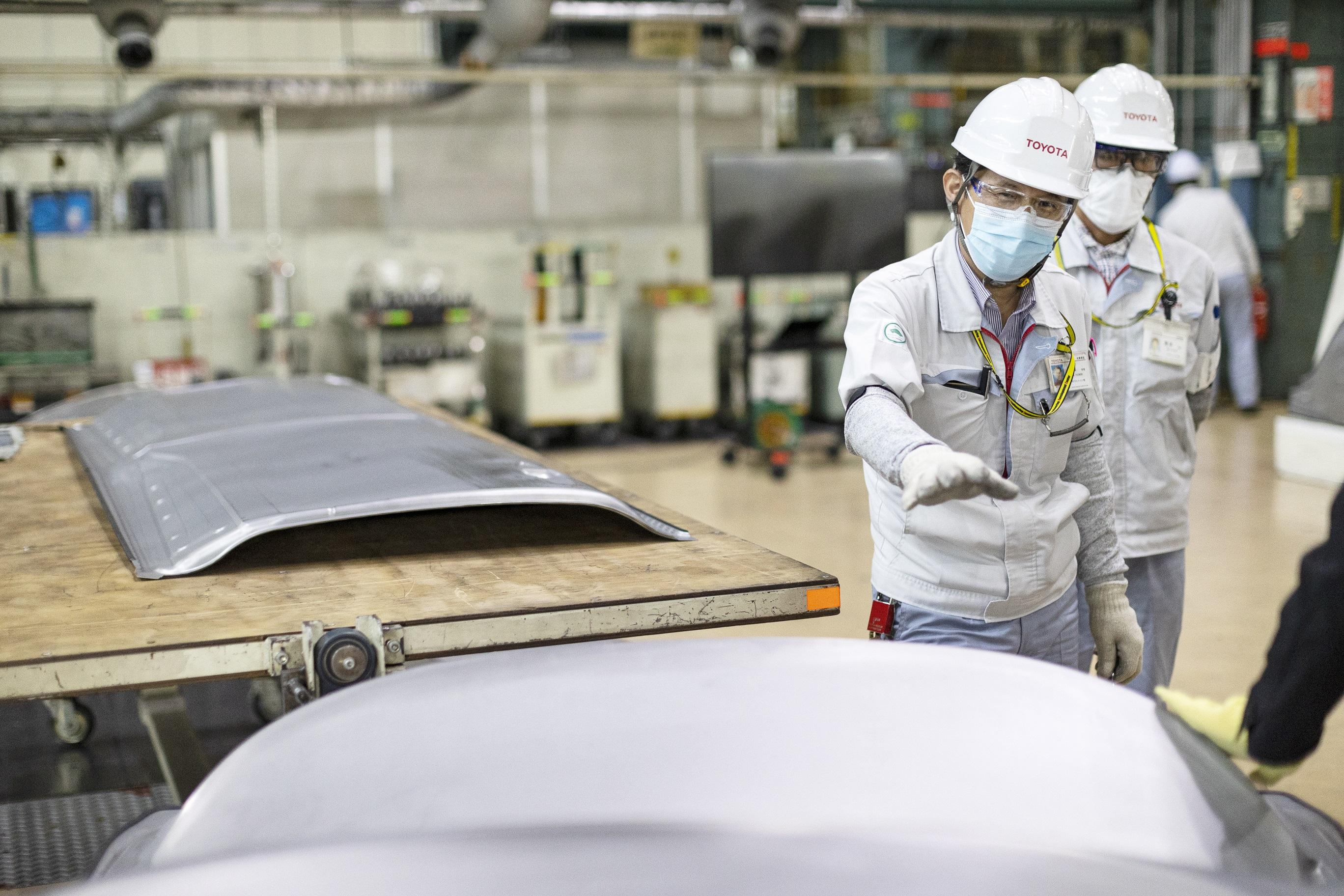
“There are many things that aren’t apparent until you actually try press molding. It’s possible for me to foresee that there might be some kind of issue just by looking at a screen displaying an image of a press mold created with 3D design software. However, I can’t predict the details of the issue until I actually do the hammering.”
The most difficult thing is allowing the juniors to gain ample experience. When Wada was still learning, there was some room for error. However, compared to the old days, there is less lead time from design to production, so the young generation has no time to learn. Wada says that he wants to solve this issue.
“The digitalization of press molding and educating personnel equipped with the knowledge to handle it will become key in the years to come, especially because we will still need press molding craftspeople even if everything related to press molding is digitized.”
Toward improving monozukuri
Wada has become one of the top press mold craftsperson in Toyota. However, he insists that he still has room to grow. That is because Toyota’s car making has changed since Akio Toyoda became president in 2009.
“Ever since President Akio Toyoda promised to make ever-better cars, a lot related to car making has changed, especially for designing bodies. The President’s words shifted the mindset of the staff, and motivated them to make more stylish looking cars. Until then, Toyota often went with rounder designs, with which the press working helped by preventing distortion, and molds were easier to make. Certain pressing requirements had to be met for many reasons, so these designs were the most practical.”

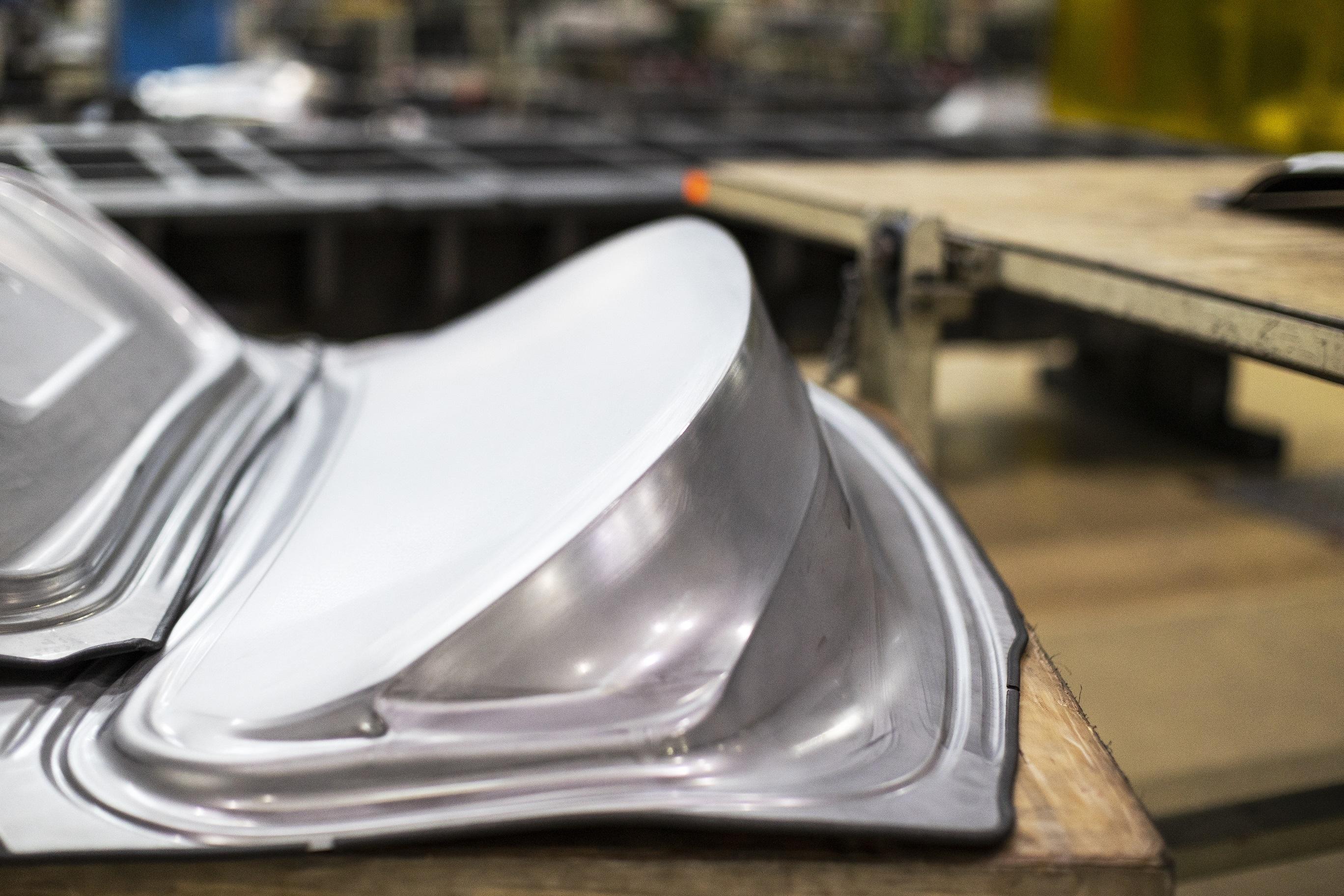
Akio's vision changed the atmosphere of the genba entirely. Since the designers have made an effort to design stylish cars, those in the manufacturing side have also recognized that they should do their best to realize the designer’s vision. They also communicate with the design department more closely now. Wada and his team are now attempting to create designs with sharper edges, which is something totally new to Toyota vehicles.
“It’s been over 10 years since then. Materials, technologies and designs constantly change and evolve, so there are always challenges. By the way, in the Lexus IS catalogue there was an excerpt about press technology included in the write up about the design used for the rear fender and around the luggage. That was a first, and it made me very happy.”
The outer panel of the above-mentioned Toyota car requires at most a four-step process; in other words, it can be completed with four rounds of press working. Meanwhile, European luxury cars generally require a six-step process. This means that Wada and his team were able to achieve a higher quality than a six-step process with only four steps. Still, Wada argues that they would be able to complete the same process in three steps if they refine their skills and technologies more.
The press molding master, Yasunobu Wada, says that if he sees a stylish car running next to him while driving, he cannot stop thinking about it. Passing on defining skills in a digital age, and constantly improving one’s skills and knowledge-the challenge of Wada to make even better cars continues at the press working genba.
(Text: Yasuhito Shibuya, photo: Akira Maeda)

